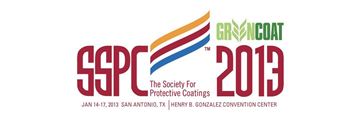Search
Products tagged with 'inspection'
View as
Sort by
Display
per page
Standard of Care’ for Coatings Inspection
Product Number:
41213-728-SG
Publication Date:
2013
$20.00
Techniques for Inspecting Wall Thickness Metal Loss of Pipelines under Nonmetallic Sleeves
Product Number:
MPWT19-14377
Publication Date:
2019
$0.00
The Contractor’s Logistics and Challenges of Painting Commercial Stores During Operation
Product Number:
41211-621-SG
Publication Date:
2011
$20.00
The Responsibility of the Third Party Inspector in Today’s Marine Environment
Product Number:
41208-433-SG
Publication Date:
2008
$20.00
Using Forensic Science to Determine Causes of Failures of Polymeric Coatings
Product Number:
41215-875-SG
Publication Date:
2015
$20.00
When Size Does Matter: An In-Depth Analysis of Brooklyn Bridge Project Data to Determine the Most Efficient Size of Abrasive Blast Containment Units and the Workforce
Product Number:
41214-831-SG
Publication Date:
2014
$20.00






